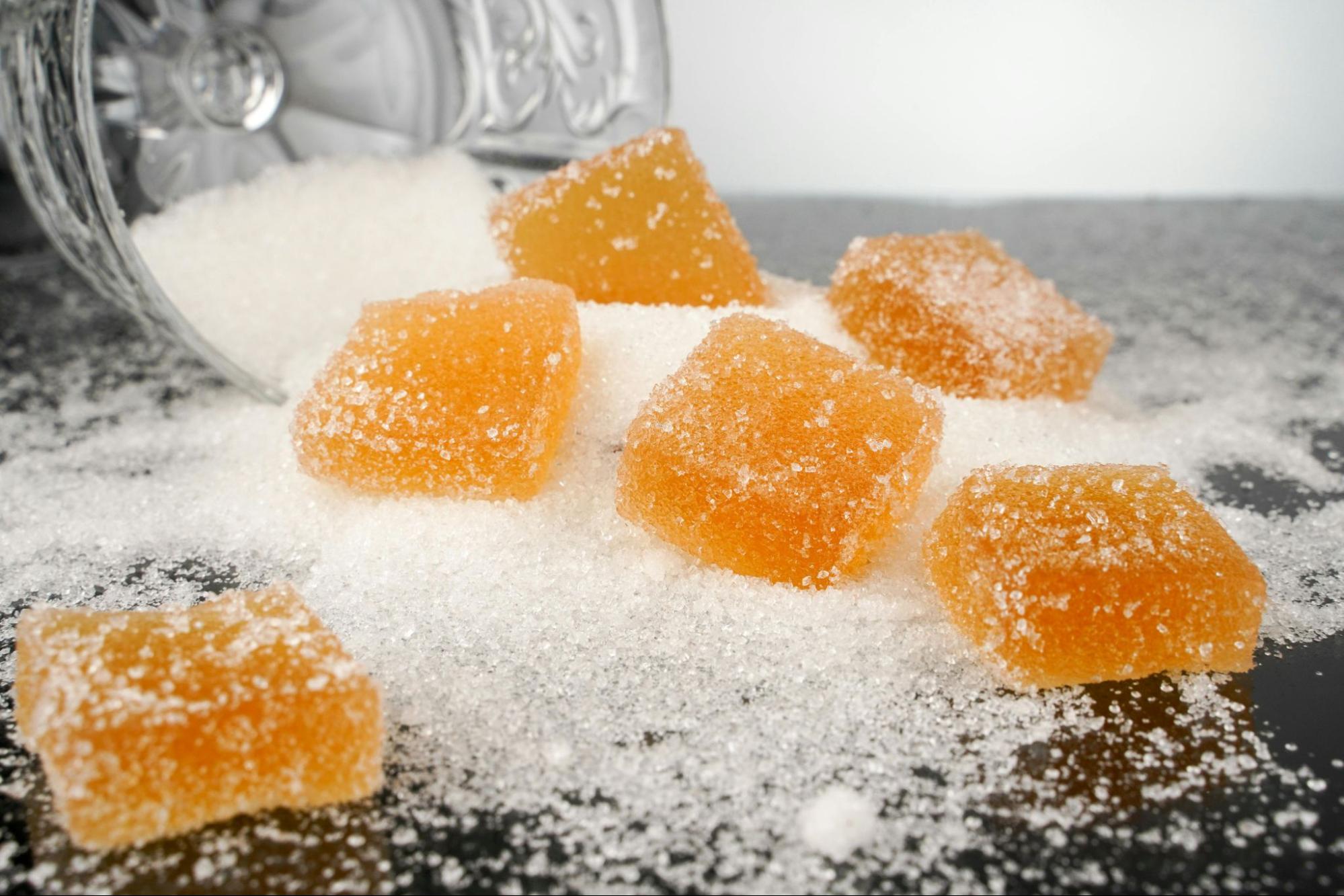Chaga mushroom has gained popularity in recent years for its numerous health benefits and medicinal properties. If you want to experience the goodness of this powerful fungus, you can easily prepare it at home. In this step-by-step guide, we will walk you through the process of preparing chaga mushroom, from understanding their health benefits to serving and storing them properly.
Understanding the Health Benefits of Chaga Mushroom
Before diving into the preparation process, it's essential to understand the health benefits that chaga mushroom offer. This unique mushroom is rich in nutrients and contains powerful compounds that contribute to its medicinal properties. Let's take a closer look at its nutritional profile and medicinal properties.

Nutritional Profile of Chaga Mushroom
Chaga mushroom is known for its impressive nutritional content. It is a great source of antioxidants, vitamins, and minerals. Some of the key nutrients found in chaga mushroom include:
- Antioxidants: Chaga mushroom contains high levels of antioxidants, which help protect the body against oxidative stress and free radical damage.
- Vitamins: It is a good source of vitamins B1, B2, and B3, as well as vitamin D2.
- Minerals: Chaga mushroom contains minerals such as copper, calcium, potassium, and zinc, which are essential for maintaining overall health.
- Dietary Fiber: It is also rich in dietary fiber, which aids in digestion and promotes a healthy gut.
But that's not all! Chaga mushroom also contains a range of other beneficial compounds, including polysaccharides, betulinic acid, and melanin. Polysaccharides are known for their immune-boosting properties, helping to strengthen the body's natural defense mechanisms. Betulinic acid, on the other hand, has been found to have anti-inflammatory and anti-cancer effects, making chaga mushroom a potential ally in the fight against chronic diseases.
Medicinal Properties of Chaga Mushroom
Aside from its nutritional value, chaga mushroom is highly regarded for its medicinal properties. It has been used for centuries in traditional medicine to treat various ailments. Some of the potential health benefits of chaga mushroom include:
- Boosting the immune system: The immune-boosting properties of chaga mushroom can help strengthen your body's defenses, making you less susceptible to infections and illnesses.
- Reducing inflammation: Inflammation is a natural response by the body, but when it becomes chronic, it can contribute to various diseases. Chaga mushroom's anti-inflammatory properties may help reduce inflammation and alleviate symptoms.
- Lowering blood sugar levels: High blood sugar levels can lead to diabetes and other health complications. Some studies suggest that chaga mushroom may help regulate blood sugar levels, making it a potential ally for individuals with diabetes or those at risk.
- Fighting against cancer cells: While more research is needed, some studies have shown that chaga mushroom may have anti-cancer properties. Its compounds, such as betulinic acid, have demonstrated the potential in inhibiting the growth of cancer cells.
- Supporting liver health: The liver plays a crucial role in detoxification and overall health. Chaga mushroom has been traditionally used to support liver health and promote its optimal functioning.

With its impressive nutritional profile and potential medicinal properties, it's no wonder that chaga mushroom has gained popularity as a health-promoting superfood. Now that we've explored its benefits, let's move on to the exciting process of preparing chaga mushroom for consumption!
Gathering Your Ingredients and Tools
Before you can start preparing chaga mushroom, you'll need to gather the necessary ingredients and tools. Here's what you'll need:
Chaga mushrooms, scientifically known as Inonotus obliquus, are a type of fungus that grows on birch trees in cold climates. They have been used for centuries in traditional medicine for their potential health benefits, such as boosting the immune system and reducing inflammation. When selecting chaga mushrooms for preparation, it's essential to choose ones that are either fresh or dried to ensure the best results.
Essential Ingredients for Chaga Preparation
To prepare chaga mushroom, you will need the following ingredients:
- Fresh or dried chaga mushroom chunks
- Purified water
- Optional: honey, cinnamon, or other flavorings to enhance the taste of the final preparation
When using fresh chaga mushrooms, it's important to properly clean and dry them before beginning the preparation process. Dried chaga mushrooms can be found in specialty health stores or online, offering a convenient option for those who may not have access to fresh chaga mushrooms.
Necessary Tools for Chaga Preparation
To ensure a smooth preparation process, you will also need the following tools:
- A sharp knife or saw to carefully cut the chaga mushroom into manageable chunks
- A cutting board for a stable surface to work on
- A medium-sized pot to simmer the chaga mushroom chunks in water
- A strainer or cheesecloth to filter out any debris or impurities from the final preparation
- A glass jar or bottle for storage to keep the prepared chaga extract fresh and potent
Before embarking on the chaga preparation process, it's recommended to research different methods and recipes to find the one that best suits your preferences and desired outcomes. Experimenting with various preparation techniques can help you discover the most enjoyable way to incorporate chaga mushrooms into your wellness routine.
Identifying and Harvesting Chaga Mushroom
Before you can start preparing chaga mushroom, it's important to be able to identify it and know when and where to harvest it. Let's explore the characteristics of chaga mushroom and the best time and places to harvest it.
Characteristics of Chaga Mushroom
Chaga mushroom, scientifically known as Inonotus obliquus, is a parasitic fungus that thrives in cold climates, particularly on birch trees. Its unique appearance sets it apart from other mushrooms, with a black and crusty exterior that resembles burnt charcoal. The interior of the chaga mushroom is where its true value lies - a vibrant orange-brown color with a dense, woody texture. This mushroom is highly sought after for its medicinal properties and is commonly used in teas and tinctures for its potential health benefits.
When harvesting chaga mushrooms, it's essential to only select mature specimens. These mushrooms take several years to develop fully, accumulating beneficial compounds during their growth. By harvesting mature chaga mushrooms, you ensure that you are getting the maximum nutritional and medicinal value from this unique fungus.
Best Time and Places to Harvest Chaga Mushroom
The best time to harvest chaga mushroom is during the winter months when the mushroom is in a dormant state. This period is ideal for harvesting as the cold temperatures slow down the metabolic processes of the fungus, making it easier to detach from the tree. When searching for chaga mushrooms, focus on birch trees, as they are the primary host for this fungus. Look for the telltale black growths protruding from the tree's bark, indicating the presence of chaga.
Harvesting chaga mushrooms should be done with care and consideration for the environment. It's crucial to practice sustainable foraging techniques, ensuring that you do not harm the host tree or deplete the chaga population in a particular area. To promote the continued growth of chaga mushrooms, it is recommended to harvest small pieces from various trees rather than depleting all the growth from a single source. This approach allows the chaga to regenerate and ensures a future supply for both foragers and the ecosystem.
Preparing Chaga Mushroom for Consumption
Once you have gathered your chaga mushroom, it's time to prepare it for consumption. The preparation process involves cleaning and drying the mushroom, as well as grinding and brewing it.
Chaga mushrooms, scientifically known as Inonotus obliquus, are a type of fungus that grows on birch trees in cold climates. They have been used for centuries in traditional medicine for their potential health benefits, including immune-boosting and antioxidant properties. Before consuming chaga mushrooms, it's essential to properly prepare them to unlock their full potential.
Cleaning and Drying Process
Start by cleaning the chaga mushroom chunks to remove any debris or bark. You can use a brush or a damp cloth to gently clean the surface. Chaga mushrooms have a rough, black exterior that can harbor dirt and impurities, so thorough cleaning is crucial. Once cleaned, cut the chaga mushroom into smaller pieces for easier handling. This step also helps expose more surface area for drying and further processing.
Next, spread the mushroom pieces on a clean surface and allow them to air dry for several days or until they become brittle and dry to touch. Drying the chaga mushrooms properly is essential to prevent mold growth and preserve their nutrients. Some enthusiasts prefer to dry chaga mushrooms using a dehydrator at a low temperature to speed up the process while retaining maximum benefits.
Grinding and Brewing Process
After the chaga mushroom is dried, you can proceed to grind it into a fine powder using a blender or a coffee grinder. Ensure that the final product is finely ground to unleash the maximum flavor and benefits of chaga mushroom. The fine powder can be used to make chaga tea, tinctures, or added to smoothies for a nutritional boost. Store the powdered chaga mushroom in a glass jar or bottle in a cool, dark place to maintain its potency and freshness.
Chaga mushrooms have a rich history in Siberian and Russian folk medicine, where they were brewed into a tea known as "chaga tea" and consumed for various health ailments. The unique compounds found in chaga mushrooms, such as beta-glucans and antioxidants, have caught the attention of modern researchers for their potential anti-inflammatory and immune-modulating effects. By preparing chaga mushrooms properly, you can incorporate this ancient remedy into your wellness routine and experience the benefits it has to offer.
Serving and Storing Chaga Mushroom
Now that your chaga mushroom is prepared and ready to use, let's explore the various ways you can serve it and the proper techniques for storing it.
Delicious Ways to Serve Chaga Mushroom
Chaga mushroom can be enjoyed in several ways. Here are a few delicious serving suggestions:
- Chaga mushroom tea: Brew the powdered chaga mushroom in hot water to make a flavorful and health-boosting tea.
- Chaga mushroom smoothie: Add powdered chaga mushroom to your favorite smoothie recipe for an extra nutritional boost.
- Chaga mushroom extract: Create a concentrated chaga mushroom extract by steeping the powdered mushroom in hot water for an extended period. This extract can be used in various recipes or taken as a daily supplement.
Proper Storage Techniques for Chaga Mushroom
To ensure the longevity of your prepared chaga mushroom, it's crucial to store it properly. Follow these storage techniques:
- Place the powdered chaga mushroom in an airtight glass jar or bottle to prevent moisture and air exposure.
- Store the jar or bottle in a cool, dry place away from direct sunlight.
- Check the stored chaga mushroom periodically for any signs of mold or deterioration.
Conclusion
Preparing chaga mushroom at home can be a rewarding experience that allows you to harness the health benefits of this remarkable fungus. By following the step-by-step guide outlined above, you can confidently prepare, serve, and store chaga mushroom for your enjoyment and well-being. Embrace the power of chaga mushroom and embark on a journey towards better health today!



















